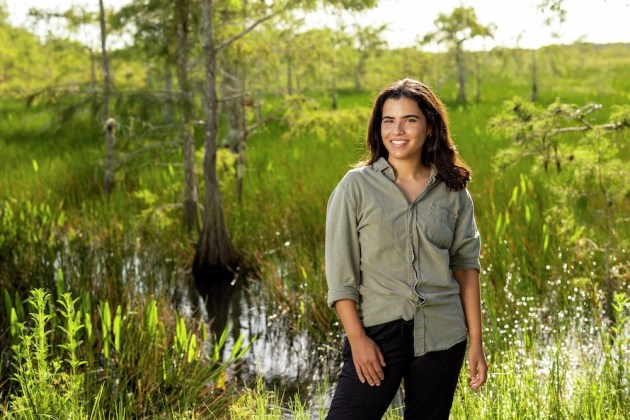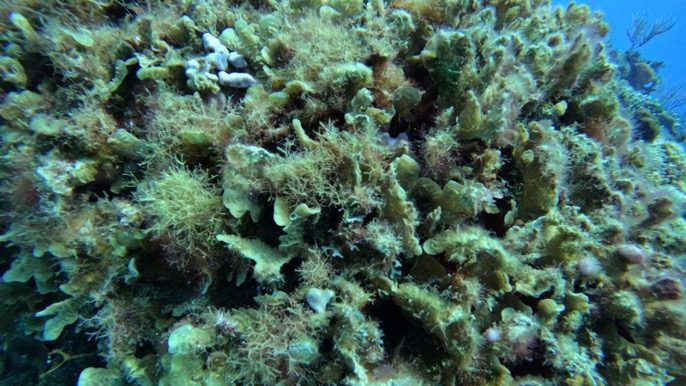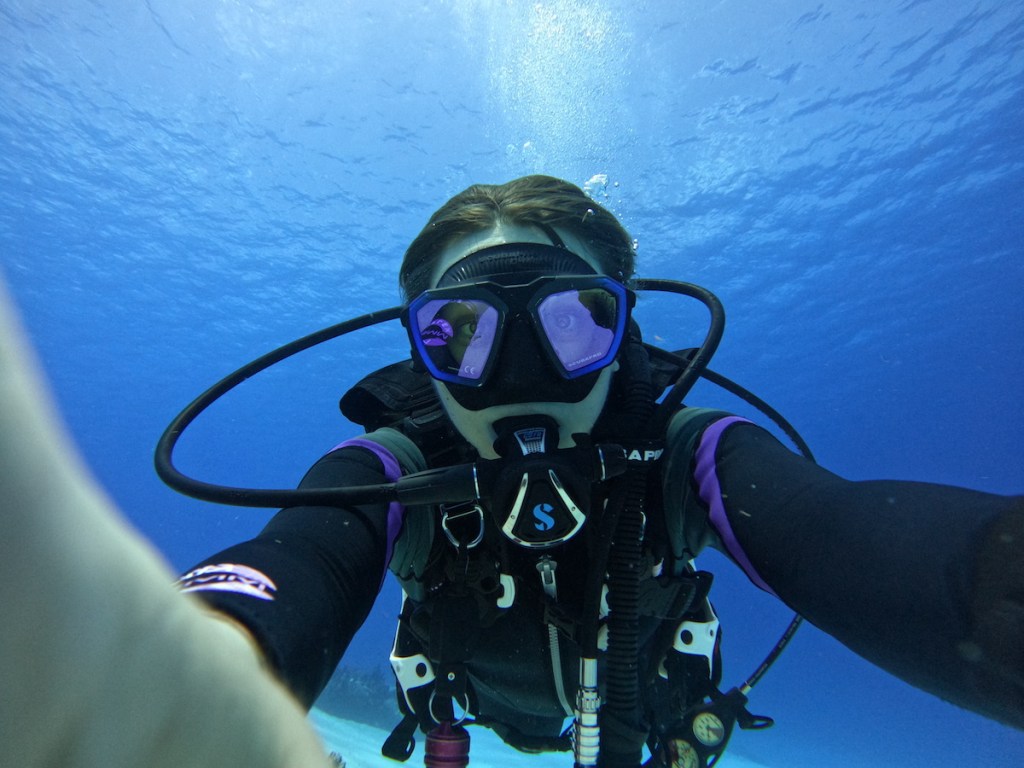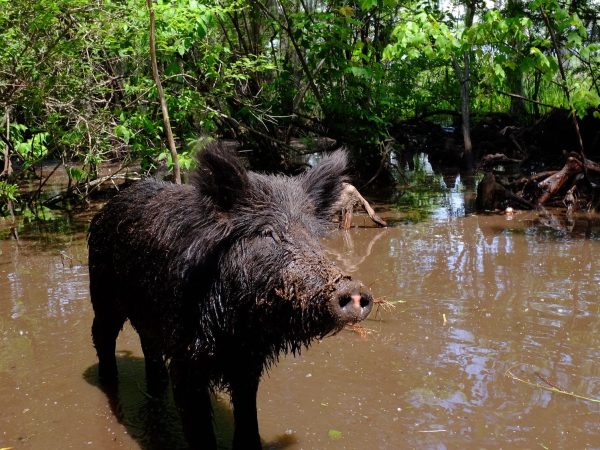This story is part of a series designed to introduce the perspectives of alumni from the National Geographic Society and The Nature Conservancy’s global youth externship program. Each guest author is an emerging leader in conservation and storytelling.

Cozumel, Mexico is a small island on the Eastern side of the Yucatan Peninsula with a total population of 88,000. The island is part of the greater Mesoamerican Barrier Reef system and has some of the most diverse reefs in the world with over 35 endemic species of coral.
As a result of those reef conditions, Cozumel became well-known in the diving community as a “must-see” dive location.
My dad, the person who introduced me to diving, frequently tells me stories of his adventures as a young dive master in the 1990s and never fails to mention that his all-time favorite diving location was Cozumel. My childhood was filled with stories about its wonder: times when he would jump in the water and the only thing he could see in front of him was the silvery shine from the large schools of fish. The first time my dad saw a hammerhead shark was diving at Santa Rosa Wall where he saw hundreds of them schooling.
In 2021 after the COVID-19 quarantine period, I decided to get scuba certified and finish my open water dives in Cozumel. My first open water dive was behind my hotel on the Villa Blanca Reef, less than one mile away from the cruise ship docks. I was so excited to jump in the water for the first time in Cozumel to finally see what my dad had been describing for years, but when I reached the sandy bottom it was barren and what little coral was left was covered in algae.
Why This Project?
Scuba diving made me fall in love with the ocean and instilled in me a drive to protect it. Inspired by Cozumel, I decided to apply for an ocean conservation externship with the National Geographic Society and The Nature Conservancy in the summer of 2023. The main focus of the externship was a research project of our choosing. I chose Cozumel’s reefs and began having conversations with my dive masters on what was causing reef destruction. It was through these conversations with locals that I was able to learn about the increase in volume of cruise ships and ultimately decided to focus my research on the impacts of the cruise industry on Cozumel’s reefs.
Become An Extern
Join hundreds of global youth who are connecting with the National Geographic Society and The Nature Conservancy.

What’s the Problem?
Over 80% of Cozumel’s coral population has died in the last 40 years as a result of tourist development on the island, specifically cruise development. Due to its close proximity to the resort town of Cancun, Cozumel began constructing its first cruise pier in the early 1970s. Cozumel now has three cruise piers, the International Pier, Punta Langosta, and Puerta Maya, and has become the largest cruise destination in the Western Caribbean with close to 5 million visitors annually.
In 2020, the Mexican Ministry of Environment and Natural Resources approved a proposal for the construction of a fourth cruise pier in Cozumel despite the fact that current cruise piers are only reaching 54% of their total capacity. The fourth cruise pier is projected to be built on a UNESCO heritage site where local advocacy groups who have surveyed the region found 20 different species of coral, including two on the critically endangered list. The construction of the fourth pier is largely feared by locals who have seen how the current rate of cruise activity has already caused an ecological imbalance for coral reefs.
Over 97% of coral populations around current cruise piers have died. In an Atlantic and Gulf Rapid Reef Assessment (AGRRA) survey done in 2022, only one dive site left in Cozumel was ranked as “very good” on the Healthy Reef Index (HRI). Over 71% of Mexico’s total reefs are listed as being in poor or critical shape on the HRI.
Cruise Ship Impacts on Coral Reefs
There are three primary impacts that cruise ships have on the reef: the dumping of untreated sewage, the spread of coral diseases, and direct damage.
Many cruise ships do not have advanced wastewater treatment systems and instead dump their gray water and untreated sewage directly into the ocean. Untreated sewage is high in nutrients such as nitrogen and phosphorus. An imbalance in the amount of nitrogen and phosphorus initiates a process called water eutrophication, or an excess of algal and plant growth. An increase in fleshy macroalgae (FMA) is one of the main culprits for coral death in Cozumel.
Macroalgal domination starves coral of the sunlight needed to continue growing its calcium carbonate skeleton. The 2022 AGRRA report shows that Mexico has 24% FMA cover, considered a “critical” level, and would need a 77% decrease of FMA to be ranked “good” on the HRI. Water sampling done by CCRRP confirms that water quality around the island is poor, contributing to declining coral populations.

Another issue caused by cruise ships is the spread of coral diseases.
Cruise ships have a ballast tank to promote hydrostatic stability of the ship. Water is taken in to the ballast tank at an initial port and expelled into the destination port during docking. Most Caribbean cruises from the US begin in Florida where there is Stony Coral Tissue Loss Disease (SCTLD) and White Band Disease. White Band Disease was brought to Cozumel in the 1980s and has primarily affected elkhorn corals which are currently at risk of becoming extinct in Cozumel.
In October 2018, an outbreak of SCTLD brought by a cruise ship ballast water from Florida caused 60% loss of Cozumel’s hard corals in one year. SCTLD is believed to be caused by bacterial pathogens in the water column that create lesions on hard corals filled with alpha-toxins ultimately killing coral cells. The presence of SCTLD permanently alters the microbial community as bacteria levels remain high, leaving corals vulnerable as they continue to fight off the disease. This means that corals that don’t look sick may still be at higher risk of death or collapse as they are fighting off higher levels of bacteria in the water column.
Finally, anchoring and the backwash of propellers causes significant direct damage to corals. Anchors frequently smash hard corals, leading to a shift from live corals to macroalgal domination. One cruise ship ran awry 40 miles north of Cozumel and damaged 80% of Cancun’s total coral population. The impacts of cruise ships on coral reefs have left Cozumel’s remaining coral populations vulnerable. Remaining coral colonies are at higher risk of collapse due to limitations in sexual reproduction, genetic recombination, and the ability to adapt to rapidly changing environments because of weaker immune systems.
Solutions
Cozumel should focus on reducing its FMA cover through improving water quality around the island. Decreasing levels of nutrients in the water can be done through the installation of port reception facilities (PRFs). PRFs collect sewage and marine litter for proper treatment at water treatment facilities. Cozumel can receive funding through the International Maritime Organization’s Technical Cooperation Fund to install IMO-approved PRFs. After the installation of PRFs, Cozumel should follow the Baltic Sea Model. In 2019, the IMO banned all cruise ships from dumping raw sewage within 12 nautical miles of shore in the Baltic Sea in order to improve water quality. All ships are required to utilize PRFs or dump sewage farther from shore.
To address the spread of coral diseases, ballast management protocols must be adopted by all cruise lines. Key protocols include the prohibition of gathering ballast water in “hot spot” zones of coral disease, rinsing of the anchor and anchor chain during every retrieval, conducting ballast exchange at least 200 nautical miles away from land, and keeping records of all ballast information to report at all ports. Additionally, the funding of local coral restoration programs helps fuel research for technologies aimed at limiting the spread of coral diseases and the repopulation of threatened coral populations.

Recovery and restoration are possible. Cozumel Coral Reef Restoration Program (CCRRP) has restored over 10,000 corals to the Villa Blanca Reef and has developed antibiotic pastes to limit the spread of SCTLD.
Finally, Cozumel needs to limit the amount of cruise ships docking at their ports if they wish to preserve the shallow reefs surrounding their island. Lowering the volume of ships coming in and utilizing marine spatial planning (MSP) to create anchoring paths for ships that avoid damaging coral colonies should help mitigate some of the damage being done to the reefs.
While Cozumel’s reefs are facing a significant threat with the growing popularity of cruise tourism in the Caribbean, implementing policies focused on minimizing the impacts of cruise ships may provide some relief for coral.
By raising awareness through my externship project, I hope to reach tourists who travel to the Caribbean to help them understand the impacts of cruise travel. I also hope that increased awareness on the water quality in Cozumel incentivizes the city council to approve a long-term water infrastructure improvement plan to begin addressing the core issue behind reef degradation in Cozumel.
Discover the conservation work of other externs from Colombia, the Maldives, and the United States in Nature Conservancy Magazine.




Join the Discussion